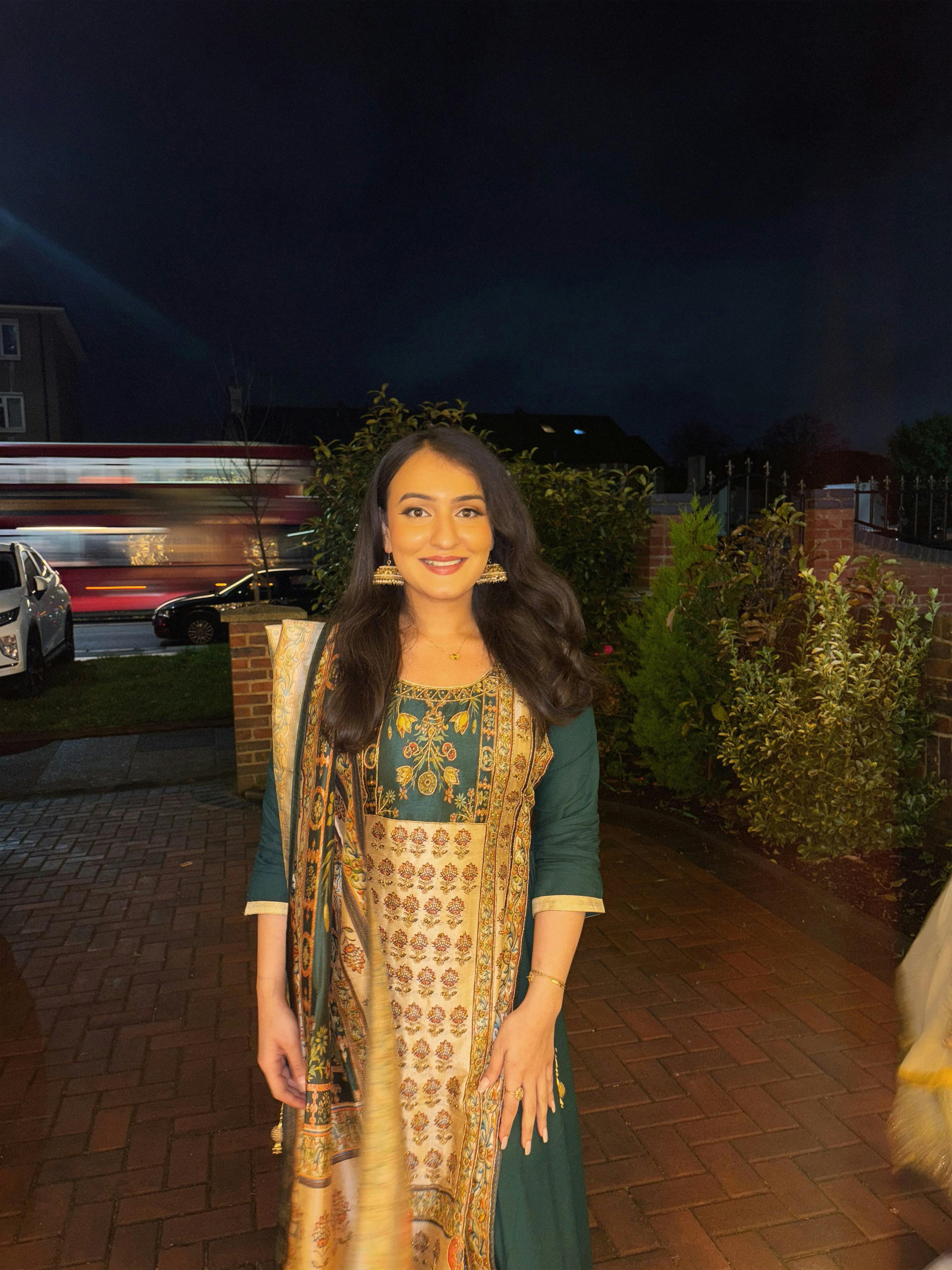
Tales From My Kitchen Table with Zainab Pirzada
Make yourself a cup of tea and take five minutes with Zainab Pirzada (@cookingwithzainab), a passionate home cook with a deep-rooted love for Eid traditions. From childhood memories of stirring kheer under her mother’s watchful eye to the anticipation of setting the Eid table, every dish she prepares is steeped in nostalgia. She shares the joy of Meethi Eid, where sweet treats like Seviyan and Suji Ka Halwa take center stage, alongside the comforting aromas of biryani and nihari filling the home. For Zainab, cooking for Eid is more than just preparing a meal, it’s about storytelling through food, creating moments of togetherness, and making traditions feel accessible for the next generation. Whether she’s putting a modern spin on classic recipes or opening her table to those without family nearby, her approach to cooking is all about warmth, love, and connection.
Can you tell us about your earliest memories of cooking for Eid?
Growing up, I rarely helped my mum in the kitchen, it was very much her domain: fast hands, sharp eyes, and recipes that lived in her head. However Ramadan and Eid were different, the one time of year when the rules softened a little and time moved slower, and I’d be asked to partake. One of my clearest memories is being allowed to help make the kheer. Not the whole thing, I wasn’t trusted with the milk or the rice just yet, but I’d be given the job of stirring and watching the milk slowly thicken. I quickly learned that I liked kheer even more when it just caught slightly at the bottom — that subtle caramelised flavour. I’d cheekily try to recreate it every time, which would frustrate my mum… even though, deep down, she preferred the slightly burnt version too, but because it wasn’t the traditional way, I could never quite get away with it.
What dishes were on your Eid table?
There are two Eids in the year, and the one that comes after Ramadan is called Eid-ul-Fitr in Arabic. In Urdu, we lovingly call it Meethi Eid, which means Sweet Eid — and as the name suggests, it’s a celebration filled with sweet treats. My mum would always start the day by making Seviyan, a dish made with sweetened milk, vermicelli, nuts, and lots of ghee. We’d also have Suji Ka Halwa, a rich semolina dessert cooked with ghee, sugar, and cardamom, then topped with toasted nuts. But it’s not all sweet! Alongside the desserts, there’d always be the savoury Eid staples — big pots of Biryani, Pulao, and Nihari, filling the house with their signature aromas, a feast in every sense of the word.
Do you have a favourite part of the cooking process?
That’s such a hard question, I feel like every part of the cooking process has its own joy, but if I had to choose, I think my favourite part is actually split between the very beginning and the very end. There’s something quite exciting about planning what to make: sitting down, thinking through the dishes, picturing how everything will come together. I love imagining the flavours, the textures, and how the whole table will look. It’s a creative process in itself, like storytelling through food. Then, right at the other end, I love that final stage when everything is plated, the table is set, and you step back and see it all come to life, I find it deeply satisfying.

How do you bring your own twist to traditional recipes?
My twist on traditional recipes comes from keeping things flexible and accessible for my Followers. Cooking shouldn’t feel intimidating, especially when it comes to recipes that people are making at home. So I often adapt classic dishes using seasonal ingredients or simple swaps that make sense for everyday cooking. If something’s not available or feels a bit out of reach, I’ll find a way to make it work like maybe switching in spinach for methi, or using a tin of chickpeas instead of soaking them overnight. Little things like that can make a big difference in how approachable a dish feels. If my version helps someone feel a bit more at ease in the kitchen, or makes a traditional dish feel doable on a weekday evening, then I feel like I’m doing a good job.
What do you love most about cooking on Eid?
Oh it’s the feeling that you’re creating something bigger than just a meal, you’re setting the scene for celebration and nostalgia. There’s so much love that goes into every dish, because you know it’s not just about the food. Knowing everyone’s getting dressed in their best clothes, getting ready to gather, eat and laugh. There’s something so special about cooking when you know it’s going to bring your loved ones together, especially after a month of reflection and fasting.
If you could invite anyone to your Eid table, who would it be?
Honestly, anyone who doesn’t have their family around. Whether they’re far from home, living alone, or just going through a season in life where things feel a bit quiet, I’d want them to feel the warmth, comfort, and joy of being part of something. If I can provide a place where someone feels seen, welcomed, and cared for — then that’s what Eid is truly about!
QUICK FIRE
Sweet or savoury: Savoury all the way
One dish that impresses but takes minimal effort: Tiramisu; who doesn’t love tiramisu
Favourite spice to cook with: Black pepper – there’s a lot more you can do with it than you think
Most underrated ingredient: Lemons, a little squeeze can change the whole game
A kitchen tool you can’t live without: I love my pestle and mortar
First thing you eat on Eid mornings: Seviyan traditionally
One dish that always brings back memories: Punjabi kadhi, very nostalgic for me.
Follow Zainab on Instagram @cookingwithzainab